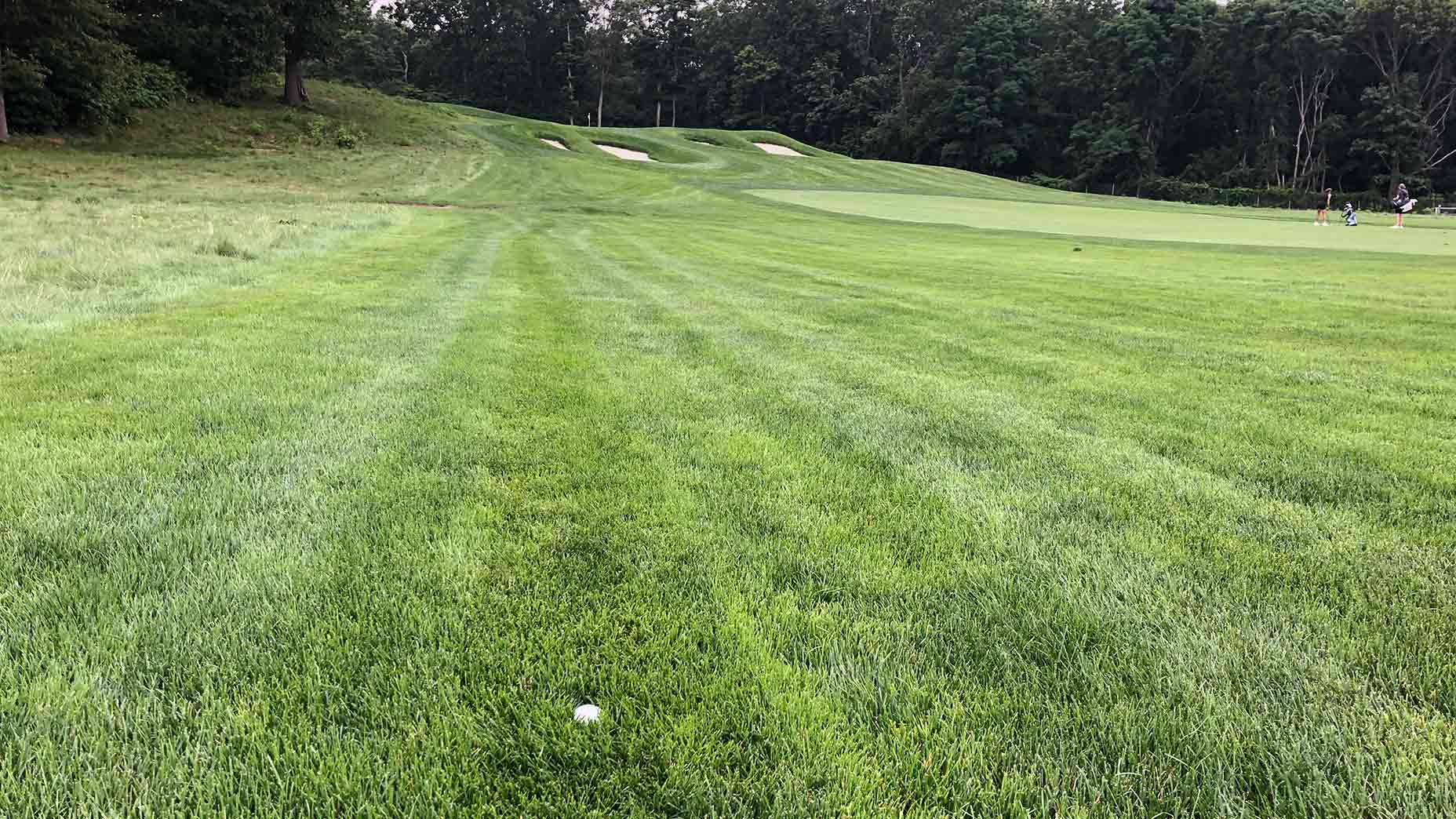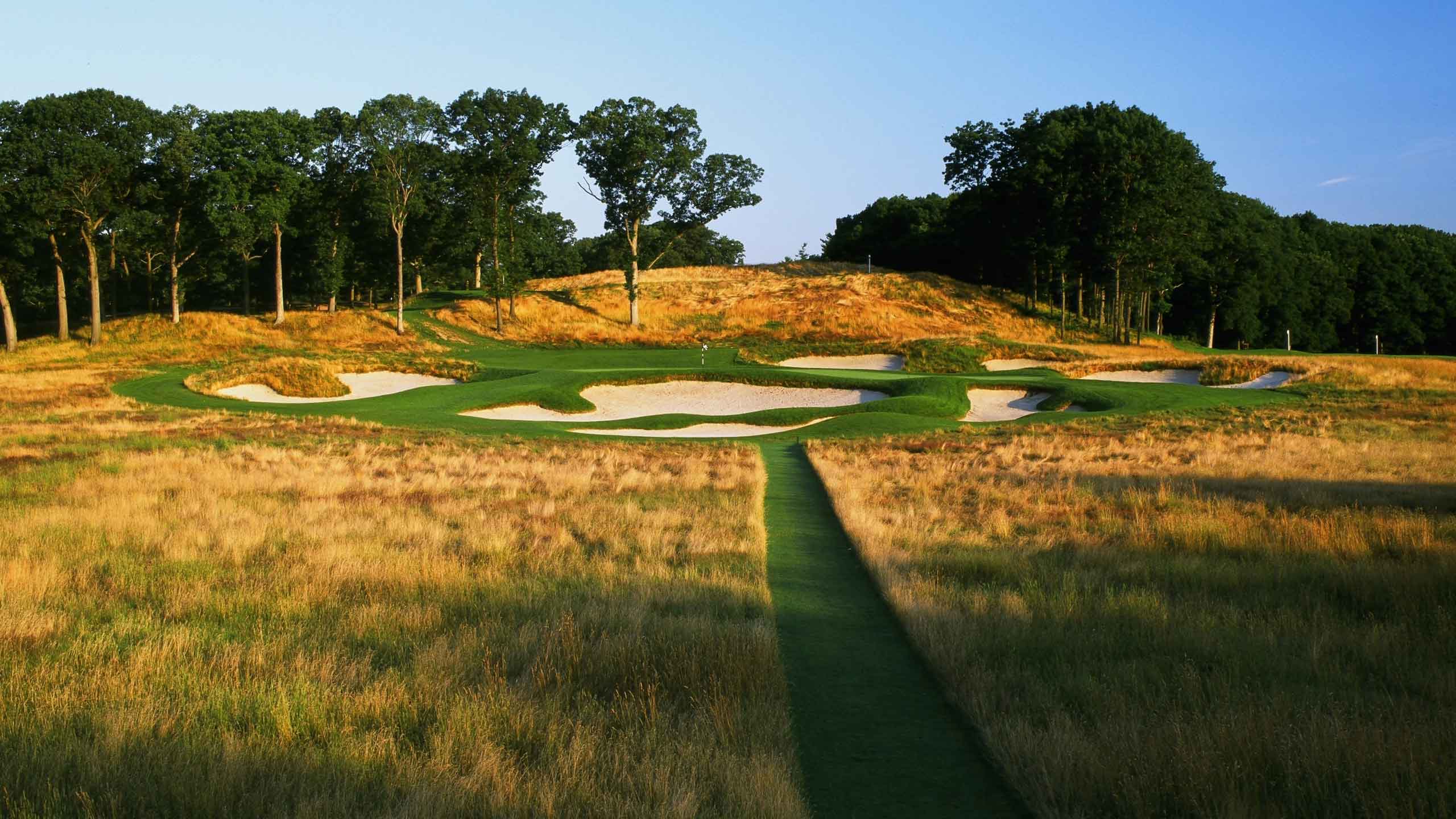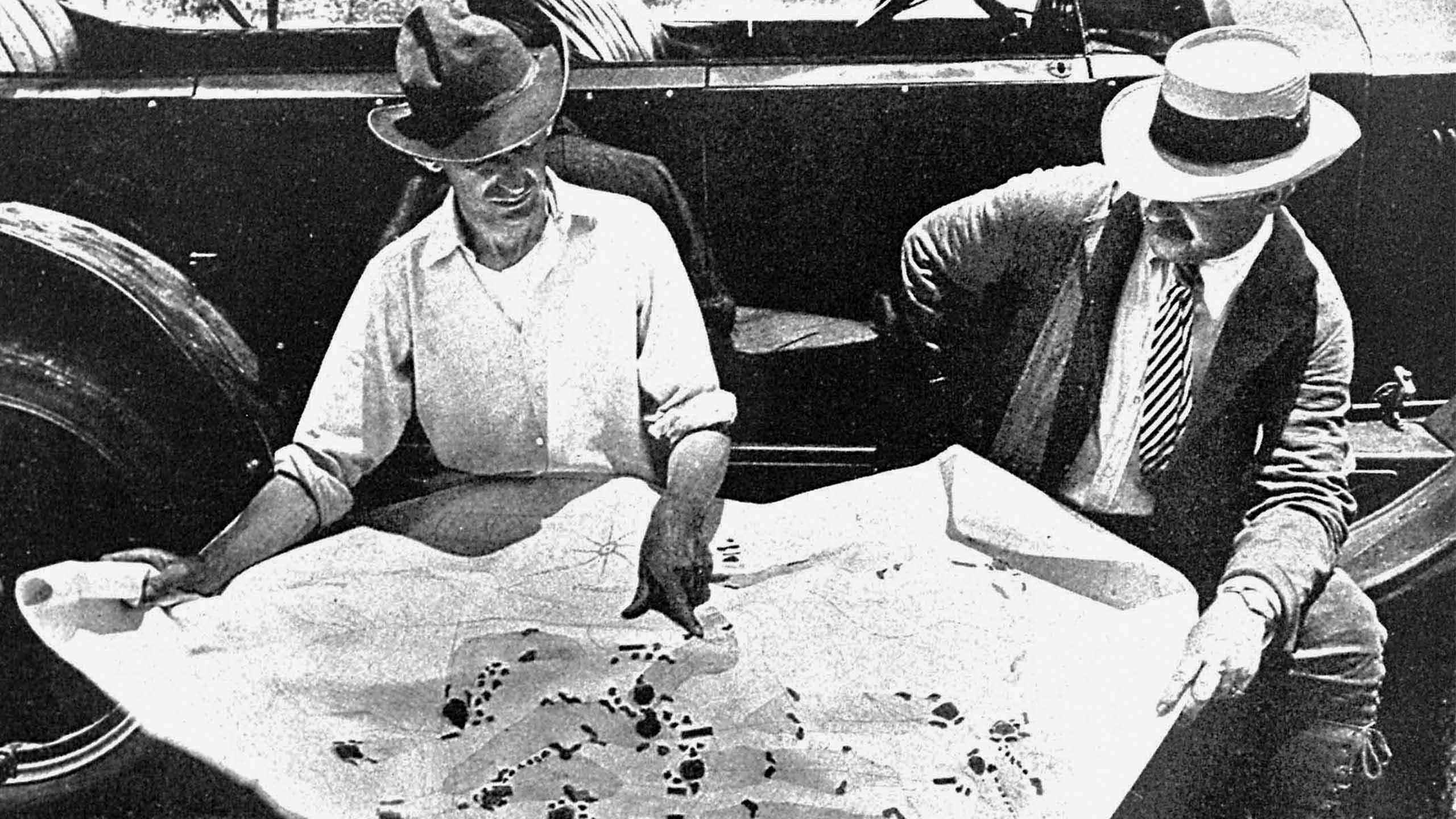We called it “The Gauntlet,” and like most other impressive feats of human endurance (see: any word that ends in “-athalon”), it was an exercise in self-loathing thinly veiled as a journey in self-love.
In 36 hours, the three of us played 90 golf holes — five whole courses — in 90-degree heat. We walked for two days, stopping only for food, sleep, restrooms, and (most obtrusively) slow golfers. Armed with little more than foolish determination and an incomprehensible supply of energy bars, we played 2.5 golf holes per hour, or one hole every 24 minutes, until we completed each of the five municipal golf courses at the Mecca of Long Island Golf: Bethpage State Park. Just this week GOLF unveiled its newest ranking, the Top 100 Value Courses in the U.S.: The best courses you can play for $150 or less, with Bethpage’s Black Course headlining the list. But there’s more to Bethpage than just the Black, and we wanted to see (and play) it all.
We left with inflamed joints, impressive blisters, insufficient energy to sit upright, and an immutable picture of the fine lines that separate normal golfers from, well … us.
This is the story of the craziest golf thing I’ve ever done: The Bethpage Gauntlet.
I. ‘Are you sure?’
The first sign to turn back came at the cash register of a 24-hour pharmacy shortly after 11 p.m. on Gauntlet’s Eve.
I’d entered with a mission: disaster prevention. I rifled through the aisles, filling my arms with athletic tape, band-aids, blister spray, Advil, Tylenol, Pedialyte and enough granola to survive a nuclear winter. After bumbling my way to the register, the cashier flashed a sympathetic look.
“I’m sorry, but we’re out of shopping bags.”
“Seriously?”
She laughed.
“Yes.”
Now, a smart person might downsize, leaving a handful of items at the register in order to carry the rest safely. Better yet, they might take the moment to reflect upon the actions that led them into possession of enough inventory to challenge Walgreens’ Long Island market share.
I, however, gleefully snapped a photo of my haul, then sumo-walked out to my car with $60.99 worth of necessities for the golf-insane.
A few minutes later, I returned to my childhood home in New Hyde Park, where I found my parents waiting for me. Just a short drive down the LIE from the course, my house had served as home base for countless Bethpage trips, and the Gauntlet would be no different.
“So James, explain to me what you’re doing again?” Dad asked carefully.
I broke down the plan. I was to play 90 holes in 36 hours with two of my coworkers, Zephyr Melton and Emily Haas. We’d break it out into two days: 54 holes the first day, 36 the day after that. We’d walk all of it — every hole at each of the five Bethpage courses, culminating with our final 18 at the Black Cou—
“Why?” Mom interrupted. “Why are you doing this?”
I paused.
“Because it’s Bethpage, and because people care about Bethpage.”
Dad sat up.
“Are you sure you want to do this?”
I nodded.
“I think it’s already too late to say no.”
II. Ouch.
Forget feisty double-breakers and short-sided chips, the truest test of any golfer starts long before a tee time. Rather, it is in the restraint required to ignore the “snooze” button in the moment the alarm beats the sun. (That goes twofold for those of us confronting the reality of a 54-hole day.)
On this day, Tuesday, a crisp 4:40 a.m. wakeup call jolted me into consciousness.
Here we go.
The provisions I’d grabbed the previous night and a small closet worth of golf gear were already in my car when I hopped into the driver’s seat. We decided weeks earlier to wear five different outfits in the corresponding color of each of the five courses — a decision that was as much a fashion statement as it was a self-preservation maneuver on Long Island in July.
By 5:30, I stood on the 1st tee box of the Blue Course with Emily (a project analyst at GOLF’s holding company, 8AM Golf) and Zephyr (a fellow assistant editor at GOLF). It was early, but it was already sticky. The air was heavy and the temperature was only rising. The 54-hole first day of the Gauntlet always seemed destined to test our spirit and the weather wasn’t going to do us any favors.
The Blue Course was a fitting launching-off point for our Bethpage tour. The easiest of the three A.W. Tillinghast designs on property (Red and Black being the others), Blue is a tale of two nines. The front, which was redesigned in the 1950s by Alfred Tull to make way for the Yellow Course, is a sledgehammer. High, elevated tee boxes and greens are connected by a series of ravines below. A handful of tees are misleading for the average player, pointed toward easily reachable bunkers and waste areas. The back nine, which has remained largely unchanged since its original 1935 design, is quintessential Tillinghast. It’s considerably flatter, more playable and thought-provoking — with comparatively subdued angles, interesting bunkering and a far more congruous routing.
Our opening 18 reflected the course. Pensive and energy-conscious, we sleptwalked to the 10th tee, but by the time we bounded up the 18th fairway, we’d each shaved in the neighborhood of 10 strokes off our outward score.

A few minutes later we headed off to the Yellow Course for our second 18. The Yellow is Bethpage’s newest course — a chipper 63 years in age — and also its easiest. Massive, yawning fairways and unguarded greens make it the ideal spot for beginners and weekend warriors alike. Zephyr (a single-digit handicap working his way down to a stick) and Emily (a former college player) smelt blood. Four hours later, I was the only one in the group with a score north of 80.
The blistering pace of our second 18 was nearly enough to mask the weight of a few pressing issues: through 36 holes, we still hadn’t felt a breeze, and though it was almost 4 p.m., the heat index hadn’t dipped below 95 since the morning. In short, we were gassed and we still had 18 holes to go.
We slunk back to the car to change for the final 18 holes, sipping on Pedialyte and inhaling a power bar or five. Suddenly, I noticed something gravely wrong.
“Zeph, what are you doing?” I asked.
“What?”
“Dude, you’re putting my shirt on.”
“No man, this is my shirt.”
It was in this moment, the Gauntlet’s 36-hole mark, when we learned a core tenet of outfit scripting: sometimes, coworkers receive the same GOLF.com freebies.
After a laugh, we trekked down to the Green Course, the oldest on property. Bethpage Green owes its original design to Devereux Emmet (of Garden City fame), who built Lenox Hills Country Club before it was absorbed into park property in 1932 and renamed. The Green Course is surprisingly well-shaped — a perfect buffer between the gentler Yellow and sterner Blue, though perhaps better enjoyed as a first or even second 18 in one day.
We came upon a brilliant sunset as we reached the end of the Gauntlet’s first day. Up ahead of us, a group of 20-somethings hacked their approaches toward the putting surface. None of the four was better than a 30-handicap, but that didn’t matter much. They sipped beers, listened to music, cackled at one another and had a grand old time as they whipped carts through fairways and rough.
It was the sort of beautifully ugly scene that has defined Bethpage State Park to locals for the better part of the last century. The sort of spectacle that only ever happens on the Bethpage courses no one outside of Long Island seems to care about. This is how The People’s Country Club looks when it belongs to the people.
The next day, the Red and the Black courses would give us the greatest Bethpage had to offer — but I was fairly confident we’d already seen the best.
III. It’s not how hard you hit…
There is a moment when every great trip becomes a journey. On Day 2 of the Bethpage Gauntlet, that moment struck at 1:22 p.m. local time.
To call the rain that fell upon Bethpage State Park a “storm” would be an overstatement. It was little more than a tiny, beat-red blip on the radar. And yet this thunder-bumper was nothing short of biblical.
Water dumped from the heavens in buckets. Thunder and lightning crackled overhead. The wind whipped into a frenzy. All of the sudden, the asphalt made a sharp sound — clack-clack-clack. Somehow, on this 90-degree day, it had begun to hail.
But before we could contemplate grabbing two of every golf club and beginning work on an arc, the storm vanished.
Even without the National Weather Service’s help, returning for Day 2 of the Gauntlet had required a healthy dose of gumption. The previous night’s sleep descended with fury upon the three of us. When we awoke at 6:30 on Wednesday morning for Day 2, our groans were audible from North Jersey.
Our first tee time of the day was supposed to be the most enjoyable of the five. The Red Course might well be the most popular Bethpage routing; a quirky, gettable par-70 that abuts the Black Course’s back nine. Some consider the Red to be Bethpage’s true championship course in that it’s welcoming to high-handicappers but challenging enough to test elite players.
I’m not sure I’d consider myself a “good” player, but I can certainly vouch that the Red Course is testy. A dose of ibuprofen befitting an apex predator wasn’t enough to return my swing to its to pre-Gauntlet form on the Red, which left me quickly in the hole. The round became the sort of four-hour bludgeoning in which mistakes and bad luck bleed together.
We trudged off the 18th green and returned to the clubhouse in disarray. Our bodies were failing us, our games were failing us, even our equipment was failing us … and we still had 18 holes remaining on one of the hardest courses on the planet.
For a fleeting moment, it actually seemed as if we might survive the Black unscathed. The first six holes, including the famous three-tiered par-5 4th, were a breeze. We weren’t playing by anyone’s standard of “good golf,” but we weren’t hitting the ball off the planet … yet. Emily, experiencing either an endorphin rush or a break from sanity, was even spotted running with bag in tow.
But anyone who’s played the Black Course can tell you precisely where it breaks souls: holes 10-12. On a normal day, those three holes (a trio of par-4s each stretching longer than 420 yards from the middle tees) are impossible. As holes 82-84 in the last 36 hours? I quietly hoped for a ProV1 to the temple from a neighboring group.
By the time we turned for the home stretch, my gait had turned to a limp. On No. 15 — a 430-yard par-4 that is unquestionably the hardest hole on the property — I pulled 7-iron from 140 yards. I hit it 130.

At long last, we made it to the 18th fairway. I powered up a portable speaker I’d tossed in my bag. As we began our ascent to the elevated final green, I queued the theme song from “Rocky.” Zephyr and I broke into a jog.
FLYING HIGH NOW…
GONNA FLY, FLY…
A few seconds later, Zephyr rolled in a three-footer to complete the Gauntlet. For the first time in my life, I hugged my playing partners on the 18th green.
IV. Postmortem
There is a line between genius and madness. As it turns out, there are actually a handful of lines, and if you look hard enough, you can find nearly all of them on a golf course.
The Bethpage Gauntlet was decidedly not genius. It was megalomaniacal. Egoist. An exercise in masochism. One of the most painful things I’ll ever do.
But isn’t that the point?
In a sport sometimes defined by exclusion, elitism and esotericism, Bethpage is proudly, loudly accessible to the world. Its openness is its best quality. I learned to play here with my Dad, walked the U.S. Open here with my Grandpa, and now have seen all of it — every inch of the place — in a day and a half.
For most people, 90 holes in 36 hours is an objectively insane endeavor. But I found something even crazier amid the chaos: Home.










